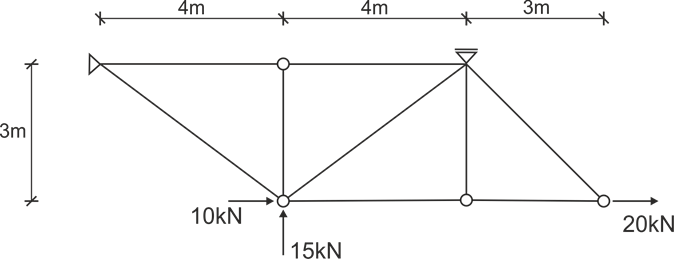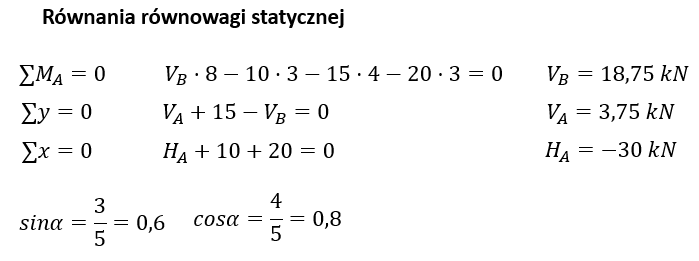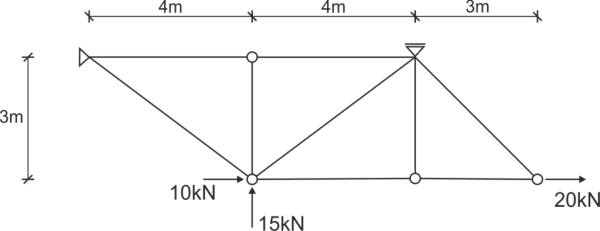Solution
See the theoretical introduction to the method of nodal equilibrium! It also points to more exercises and materials on this topic!



These will be the bars 4 and 6 from the third theorem on zero bars and bar number 7, from the second theorem.
In principle, we can start from node A or from node (7-9).
Let's start from node A (1-3).



At this point, we have specified three bars as zero initially, we have calculated the next four from the equilibrium of two nodes, which gives us 7 out of 9 bars. The remaining bars are bar no 9 and bar no 2.
From the second theorem on zero bars, an additional rule follows - if a force acts on a node in such a way that its direction is collinear with one of the bars and no other force can be projected onto this line, then the force in the bar is transmitted collinearly.
Let's look at the picture below, which shows the graph of normal forces.
We have this situation in the nodes marked on the drawing.

Graph of normal forces, markings:

Example
Content
For a given truss, indicate the zero bars and determine the forces in all bars using the method of nodal equilibrium.

Solution
Step 1
Numbering the bars, possible marking of nodes, marking of support reactions.
Step 2
Writing the equations of static equilibrium and calculating the support reactions.
Step 3
Determine the zero bars.These will be the bars 4 and 6 from the third theorem on zero bars and bar number 7, from the second theorem.
Step 4
Create node equilibrium.In principle, we can start from node A or from node (7-9).
Let's start from node A (1-3).

We write the equations of static equilibrium for this node.
We can write the sum of projections on the "x" and "y" axes
Similarly, we make the cut at the node (3-4-5-8).

At this point, we have specified three bars as zero initially, we have calculated the next four from the equilibrium of two nodes, which gives us 7 out of 9 bars. The remaining bars are bar no 9 and bar no 2.
From the second theorem on zero bars, an additional rule follows - if a force acts on a node in such a way that its direction is collinear with one of the bars and no other force can be projected onto this line, then the force in the bar is transmitted collinearly.
Let's look at the picture below, which shows the graph of normal forces.
We have this situation in the nodes marked on the drawing.

Graph of normal forces, markings:

If you have any questions, comments, or think you have found a mistake in this solution, please send us a message at kontakt@edupanda.pl.
